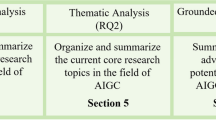Abstract
Many children struggle with reading and are seldom engaged in this process when teachers assign them to read. Young learners may lack motivation to read an dislike this activity because they have had frequently have unpleasant experiences with reading. If educators fail to provide support for struggling readers, these pupils will likely experience academic problems in later years. One strategy that instructors can implement to provide help for students who perform poorly in reading is to teach reading with multimodal e-books. Multimodal e-books are interactive electronic resources that combine text with sound, animation, and images and often include text that is read aloud and highlighted. The purpose of this article is to discuss how teachers can use multimodal e-books to help children make academic gains in reading and to provide guidelines for selecting good interactive e-books. Also included in this article is an annotated bibliography of CD-ROMs and e-book apps for children.
Similar content being viewed by others
References
Brinda, W. (2011). A “ladder to literacy” engages reluctant readers. Middle School Journal, 43(2), 8–17.
De Jong, M. T., & Bus, A. G. (2002). Quality of book-reading matters for emergent readers: An experiment with the same book in a regular or electronic format. Journal of Educational Psychology, 94, 145–155.
Fielding, L., & Roller, C. (1992). Making difficult books accessible and easy books acceptable. The Reading Teacher, 45, 678–685.
Gellevij, M., Van Der Meij, H., De Jong, T., & Pieters, J. (2002). Multimodal versus unimodal instruction in a complex learning context. Journal of Experimental Education, 70(3), 215–240.
Henley, M., Ramsey, R. S., & Algozzine, R. F. (2009). Characteristics of and strategies for teaching students with mild disabilities. Upper Saddle River: Pearson.
Jalongo, M. R. (2004). Young children and picture books (2nd ed.). Washington, DC: National Association for the Education of Young Children.
Jalongo, M. R., Dragich, D., Conrad, N. K., & Zhang, A. (2002). Using wordless picture books to support emergent literacy. Early Childhood Education Journal, 29(3), 167–177.
Jalongo, M. R., & Ribblett, D. M. (1997). Using song picture books to support emergent literacy. Childhood Education, 74(1), 15–22.
King-Sears, M. E., & Evmenova, A. S. (2007). Premises, principles, and processes for integrating technology into instruction. Teaching Exceptional Children, 40(1), 6–14.
Ko, C. C., Chiang, C. H., Lin, Y. L., & Chen, M. C. (2011). An individualized e-reading system developed based on multi-representations approach. Educational Technology & Society, 14(4), 88–98.
Lacina, J., & Mathews, S. (2012). Using online storybooks to build comprehension. Childhood Education, 88(3), 155–161.
Larson, L. (2010). Digital readers: The next chapter in e-book reading and response. The Reading Teacher, 64(1), 15–22.
Lefever-Davis, S., & Pearman, C. (2005). Early readers and electronic texts: CD-ROM storybook features that influence reading behaviors. The Reading Teacher, 58(5), 446–454.
Lyon, G. R. (2012). Why some children have difficulties learning to read. Retrieved from http://www.readingrockets.org/article/296/.
Margolis, H., & McCabe, P. P. (2006). Motivating struggling readers in an era of mandated instructional practices. Reading Psychology, 27(5), 435–455.
Matthew, K. (1997). A comparison of the influence of interactive CD-ROM storybooks and traditional print storybooks on reading comprehension. Journal of Research on Computing in Education, 29(3), 263–277.
Merton, R. K. (1968). The Matthew effect in science. Science, 159(3810), 56–63.
Neuman, S. B. (2009). The case for multi-media presentation in learning: A theory of synergy. In A. G. Bus & S. B. Neuman (Eds.), Multimedia and literacy development: Improving achievement for young learners (pp. 44–56). New York, NY: Taylor & Francis.
Padak, N., & Potenza-Radis, C. (2010). Motivating struggling readers: Three keys to success. New England Reading Association Journal, 45(2), 1–7.
Pearman, C. J. (2008). Independent reading of CD-ROM storybooks: Measuring comprehension with oral retellings. The Reading Teacher, 61(8), 594–602.
Quirk, M., & Schwanenflugel, P. J. (2004). Do supplemental remedial reading programs address the motivational issues of struggling readers? An analysis of five popular programs. Reading Research and Instruction, 43(3), 1–19.
Rasinski, T., Padak, N., & Fawcett, G. (2010). Teaching children who find reading difficult. Boston, MA: Allyn and Bacon.
Rhodes, J. A., & Milby, T. M. (2007). Electronic books: Integrating technology to support readers with disabilities. The Reading Teacher, 61(3), 255–259.
Sankey, M., Birch, D., & Gardiner, M. (2010). Engaging students through multimodal learning environments: The journey continues. Retrieved from http://www.ascilite.org.au/conferences/sydney10/procs/Sankey-full.pdf.
Shamir, A., & Baruch, D. (2012). Educational e-books: A support for vocabulary and early math for children at risk for learning disabilities. Educational Media International, 49(1), 33–47.
Shamir, A., & Korat, O. (2006). How to select CD-ROM storybooks for young children: The teacher’s role. The Reading Teacher, 59(6), 532–543.
Shamir, A., & Shlafer, I. (2011). E-books effectiveness in promoting phonological awareness and concept about print: A comparison between children at risk for learning disabilities and typically developing kindergarteners. Computers & Education, 57(3), 1989–1997.
Strasser, J., & Seplocha, H. (2007). Using picture books to support young children’s literacy. Childhood Education, 83, 219–224.
Wanzek, J., & Kent, S. C. (2012). Reading interventions for students with learning disabilities in the upper elementary grades. Learning Disabilities a Contemporary Journal, 10(1), 5–16.
Wood, I. (1997). CD-ROMs for kids: Booklist’s best bets. Chicago, IL: American Library Association, Booklist Publications.
Author information
Authors and Affiliations
Corresponding author
Rights and permissions
About this article
Cite this article
Morgan, H. Multimodal Children’s E-Books Help Young Learners in Reading. Early Childhood Educ J 41, 477–483 (2013). https://doi.org/10.1007/s10643-013-0575-8
Published:
Issue Date:
DOI: https://doi.org/10.1007/s10643-013-0575-8




